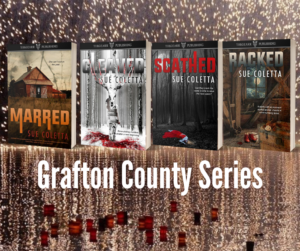 by Jodie Renner, editor & author
by Jodie Renner, editor & author
You run into a friend and mention you’re writing a novel. “What’s it about?” they ask.
You stammer, “Well, it’s about this guy… Actually, and his sidekick too. She’s a woman. They don’t really get along all that well… at least, not at the beginning. He’s former FBI agent and she used to be a cop. Did I tell you they’re private detectives? Anyway, they get this weird case… Hey, where are you going? I was just getting to the good part!”
This is the kind of situation where you wish you had created a succinct, compelling storyline or “elevator pitch,” well-prepared and memorized.
Here are some tips on writing an engaging storyline, tagline, elevator pitch, and back cover copy for your novel. These are all essentials for hooking potential readers and enticing them to read your novel. If you’re still writing your novel, doing these exercises will help you focus on the core of your story and how best to engage readers.
STORYLINE:
Your storyline (or logline) gives the gist of your book in a few sentences. It tells something about the main character, the conflict or dilemma, and the stakes.
When someone casually asks you what your book is about, you’ll probably give them your storyline/logline. It’s a condensed version of the elevator pitch.
Even if you haven’t yet finished your novel, writing a storyline for it will help you zero in on what your story is really about, at its essence, and what emotion(s) you want to evoke in your readers.
Start with a 5-6-sentence version (up to a paragraph or two) and work down to one or two sentences. Keep your longer version as your “elevator pitch” for when the situation allows enough time to use it.
To create your storyline, first answer these questions:
Who is your main character? (Not just the name, or not necessarily the name at all.)
Where does the story take place? (if it’s of interest)
What is the protagonist’s goal?
What is the situation, problem, challenge, obstacle, or dilemma the protagonist faces?
Why does it matter? Why does he/she have to overcome the obstacle, vanquish the foe, or solve the problem?
How does he/she solve the problem?
Of course, you won’t reveal the answer to the last question in your logline, tagline, or back cover copy!
Randy Ingermanson and Peter Economy, in their excellent book for newbie writers, Writing Fiction for Dummies, talk about a one-sentence storyline or “one-sentence summary,” which is kind of like a condensed elevator pitch or condensed back-cover copy. They say to “shoot for 25 words or less. If you can do it in less than 15 words, you get extra credit.” Other tips by them for a compelling one-sentence storyline, condensed and paraphrased:
- Limit the storyline to just a few main characters. Of course, include the protagonist.
- Tell one thread of the story, ether the most essential one or the most interesting one.
- Most of the time, don’t name the characters. Instead, find unique, fascinating ways to describe each of them.
- Use adjectives that evoke empathy or cast a character as vulnerable or an outsider.
- Include verbs that pack a punch, like battles or struggles.
- Backload the storyline by putting a surprise or some emotively punchy words at the end of the sentence.
Ingermanson and Economy provide some one-sentence storylines for well-known novels. Here are a few of them:
The Firm, by John Grisham (legal thriller): “A brilliant young lawyer gets a fabulous job at a firm that is a cover for a Mafia money-laundering operation.”
The Clan of the Cave Bear, by Jean Auel (historical): “A young human girl in Ice Age Europe struggles to survive persecution by her adoptive clan of Neanderthals.”
Gorky Park, by Martin Cruz Smith (mystery): “A Moscow homicide detective investigates a bizarre triple murder and runs afoul of the KGB and FBI.”
The Kite Runner, by Khaled Hosseini (literary): “A boy raised in Afghanistan grows up with the shame of having failed to fight the gang of boys who raped his closest friend.”
The Lord of the Rings, by J.R.R. Tolkien (fantasy): “A Hobbit learns that destroying his magic ring is the key to saving Middle Earth from the Dark Lord.”
Outlander, by Diana Gabaldon (time-travel romance): “A young English nurse searches for the way back home after time-traveling from 1945 to 1743 Scotland.”
The Da Vinci Code, by Dan Brown (thriller): “A Harvard symbologist and a female French cryptographer solve the puzzle of the Holy Grail in a race against death across Europe.”
Pride and Prejudice, by Jane Austen (romance): “A young English woman from a peculiar family is pursued by an arrogant and wealthy young man.”
Resources: Randy Ingermanson & Peter Economy, Writing Fiction for Dummies; Shaunta Grimes, The Everyday Novelist blog, “How (and Why) to Write a Logline and a Tagline for Your Book”
TAGLINE:
The tagline evolves from the storyline but is even briefer and snappier. It’s a one-line hook whose job is to evoke emotion and compel readers to open your book. Readers want to know what they will feel if they read your book, so it needs to pack an emotive punch.
The tagline might go on the front cover of your book, in bold and/or italics at the top of your back cover or your book description on Amazon, at the beginning of a query letter, in the signature of your emails, as part of your Facebook or other social media page, or elsewhere. It might be as long as two or three brief sentences if it goes at the top of your back cover or Amazon description.
What makes a great tagline? Here are some tips:
- Keep it short – a sentence or sentence fragment is best.
- Make every word count. Skip “This book is about.” Make it pack a punch.
- Hint at genre. Readers want to know what they’re getting into, whether this is going to be their kind of book.
- Capture the tone of your story – overall, is it lyrical, nail-biting, romantic, sad, humorous, intriguing, fanciful, sexy, adventurous?
- Arouse curiosity. Maybe ask an intriguing question, raise a question just by the wording, or hint at danger or an impossible dilemma.
- Invoke emotions. Choose words that appeal to readers’ emotions.
- Make sure your phrase has an easy rhythm and flow. Read it aloud and cut out any unnecessary or convoluted words.
Brainstorm a variety of taglines. Write them all out and compare them for emotional punch, intrigue, brevity, and flow.
Here are some taglines from the front cover, the top of the back cover, or the top of the Amazon book description of well-known novels:
Blue Moon, by Lee Child: “Jack Reacher comes to the aid of an elderly couple . . . and confronts his most dangerous opponents yet.”
The Return, by Nicholas Sparks: “In the romantic tradition of Dear John, an injured Navy doctor meets two extremely important women whose secrets will change the course of his life.”
The Dark Hours, by Michael Connelly: “Has a killer lain dormant for years only to strike again on New Year’s Eve?”
Legacy, by Nora Roberts: “…a new novel of a mother and a daughter, of ambition and romance, and of a traumatic past reawakened by a terrifying threat…”
Odd Thomas, by Dean Koontz: “Every gift has a price.”
Willa of the Wood, by Robert Beatty: “Move without a sound. Steal without a trace.”
Insurrection, by Tom Combs: “Domestic terrorists, a captive ER, and a nation held hostage.”
Her Last Tomorrow, by Adam Croft: “Could you murder your wife to save your daughter?”
Taken, by Robert Crais: “The search for a missing girl leads private investigators Elvis Cole and Joe Pike into the nightmarish world of human trafficking.”
The Husband’s Secret, by Liane Moriarty: “The trouble with the truth is that it can change everything.”
Silent Child, by Sarah A. Denzil: “Her child has the answers. But he can’t tell her the unspeakable.”
Gone Girl, by Gillian Flynn: “There are two sides to every story.”
The Crucifix Killer, by Chris Carter: “Cross your heart and hope to die…quickly.”
Outfox, by Sandra Brown: “One man with multiple identities. Eight vanished women. The next target…his wife.”
BACK COVER COPY
Your back cover copy or book description is the biggest deciding factor for readers picking up your book for the first time. Not only does it have to be enticing and polished, but it has to strike at the heart of your actual story, hint at the genre and tone, and incite curiosity among the readers, to compel them to open the book and read the first page (which, as you know, is also critically important).
Your back cover copy or book description needs to:
– Grab readers’ attention – in a good way
– Incite curiosity about this book 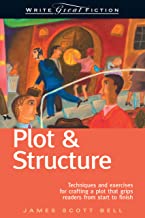
– Tell us roughly what the story is about
– Give an indication of the genre and tone of the book
– Introduce us to the main character and his goal
– Tell us the protagonist’s main problem or dilemma
– Leave us wanting to find out more
James Scott Bell (Yes, TKZ’s beloved Sunday columnist and writing guru) gives us a great template for writing strong, compelling back cover copy in his excellent book, Plot & Structure.
Jim’s outline is a perfect jumping-off point for creating your own book description.
Paragraph 1: Your main character’s name and her current situation:
__________________ is a ________________ who ___________________________________.
Write one or two more sentences, describing something of the character’s background and current world.
Paragraph 2: Start with Suddenly or But when. Fill in the major turning point, the event that threatens the character, disrupts his world and forces him to take action. Add two or three more sentences about what happens next.
“But his world is turned upside down when…”
Paragraph 3: Start with Now and make it an action sentence, for example, “Now (name) must struggle with….”
Or use a question or two starting with Will: Will (name) be able to….? Or will she….? And will these events….?
Then add a final sentence that is pure marketing, like “(Title) is a riveting…. novel about …. that will …you…till the … twist at the end.
Now polish it up, making sure every word counts and you’ve used the best possible word for each situation. Aim for about 250-500 words in total.
There are of course many other ways to grab your readers in your book description, but be sure to use the main character’s name and hint at the threat that has upset his world and the obstacles he needs to overcome to win, survive or defeat evil, and right wrongs. And leave the readers with a question, to pique their curiosity and propel them into the story.
Then, if there’s space, you could squeeze in a great blurb or two, or a short author bio.
Resource: James Scott Bell, Write Great Fiction – Plot & Structure. I highly recommend this book of Bell’s, as well as his excellent Revision & Self-Editing for Publication, which I recommend to all my clients.
TKZers – Would you like to share your back cover copy, book description, storyline, or tagline with us? Or create one for a well-known novel?
*By the way, I’m over at Kay DiBianca’s blog today as well. Kay is interviewing me about my writing advice in Fire up Your Fiction and related topics. Hop over there for a look! 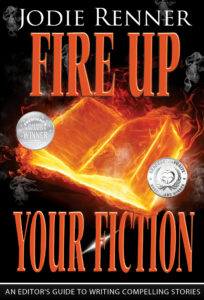
Jodie Renner is a freelance fiction editor and the award-winning author of three writing guides in her series An Editor’s Guide to Writing Compelling Fiction: FIRE UP YOUR FICTION, CAPTIVATE YOUR READERS, and WRITING A KILLER THRILLER, as well as two clickable time-saving e-resources, QUICK CLICKS: Spelling List and QUICK CLICKS: Word Usage. She has also organized and edited two anthologies. Website, Blog – Resources for Writers, Facebook, Amazon Author Page.
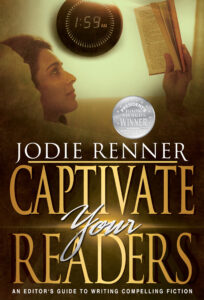





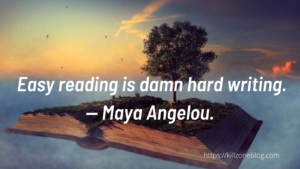 I always write to music, but a problem arose recently that made me question my writing ritual.
I always write to music, but a problem arose recently that made me question my writing ritual.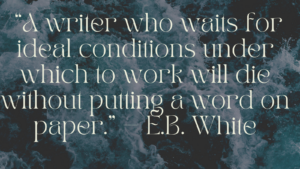 By switching to Pandora, not knowing what song would play or when, my brain couldn’t interpret the music as white noise.
By switching to Pandora, not knowing what song would play or when, my brain couldn’t interpret the music as white noise.
 [Side note: English is a particularly difficult language for non-native speakers to learn because it’s full of inconsistencies and contradictory rules. If you didn’t learn English as a first language, please accept my condolences for the misery you’re going through.]
[Side note: English is a particularly difficult language for non-native speakers to learn because it’s full of inconsistencies and contradictory rules. If you didn’t learn English as a first language, please accept my condolences for the misery you’re going through.]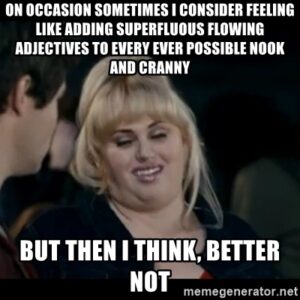
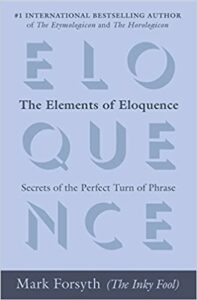 Recently I learned that new lesson when TKZ regular Chuck sent me an interesting article that quotes
Recently I learned that new lesson when TKZ regular Chuck sent me an interesting article that quotes 
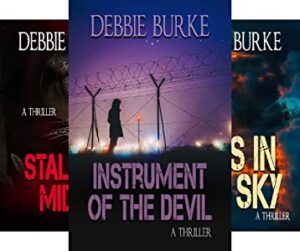
 by Jodie Renner,
by Jodie Renner, 



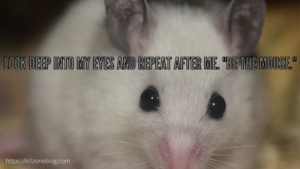 But it’s not as simple as that, is it? Persistence can be grueling at times.
But it’s not as simple as that, is it? Persistence can be grueling at times.







 To master the art of writing we need to read. Whenever the words won’t flow, I grab my Kindle. Reading someone else’s story kickstarts my creativity, and like magic, I know exactly what I need to do in my WIP.
To master the art of writing we need to read. Whenever the words won’t flow, I grab my Kindle. Reading someone else’s story kickstarts my creativity, and like magic, I know exactly what I need to do in my WIP.
